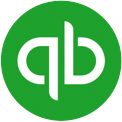Determine fixed costs
Fixed costs refer to the expenses that do not change from one month to the next. These are necessary and recurring expenses that your business spends to operate normally. Such costs include rent, phone bills, insurance, debt repayments, and business supplies.
Check your financial statements to ensure you have accounted for all fixed expenses, whether they happen monthly, quarterly, bi-annually, or annually. You won’t want to miss any figures, as those that go unaccounted for can rear their ugly head later in the year, throwing your budget out of whack.
Remember, your fixed costs will differ from another business’s fixed costs, depending on the industry as well as the internal and external processes governing your business. List and add up all fixed costs to calculate your total fixed expenses. Set that figure aside and then move on to the next step.




